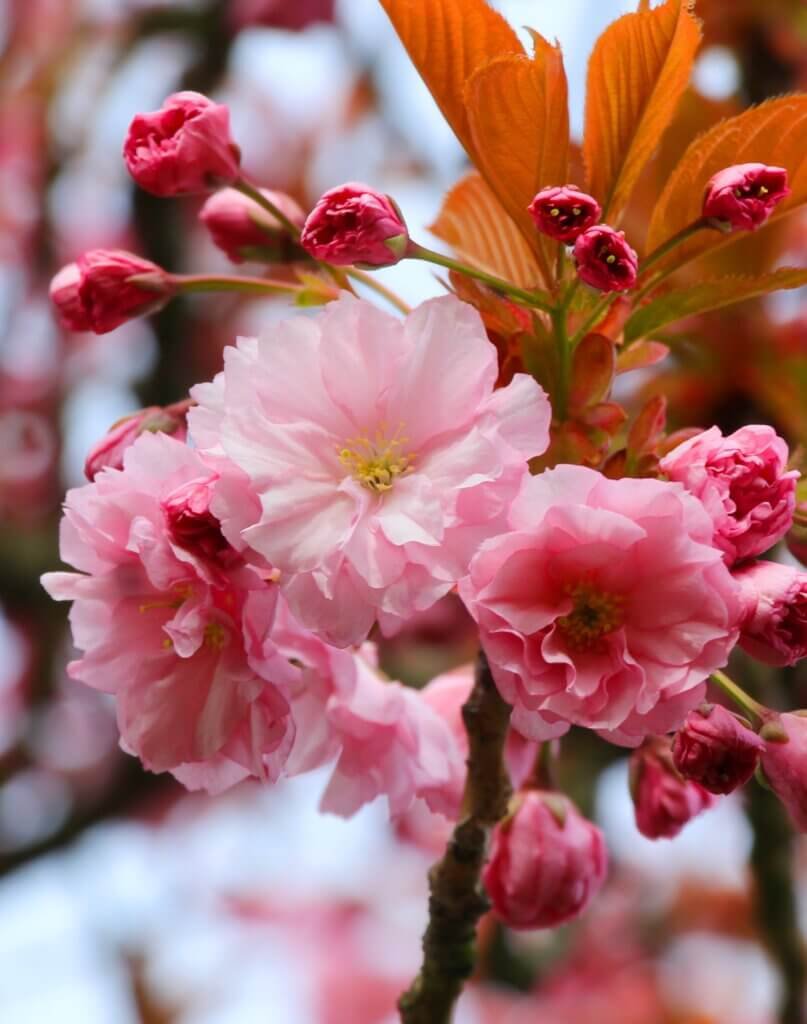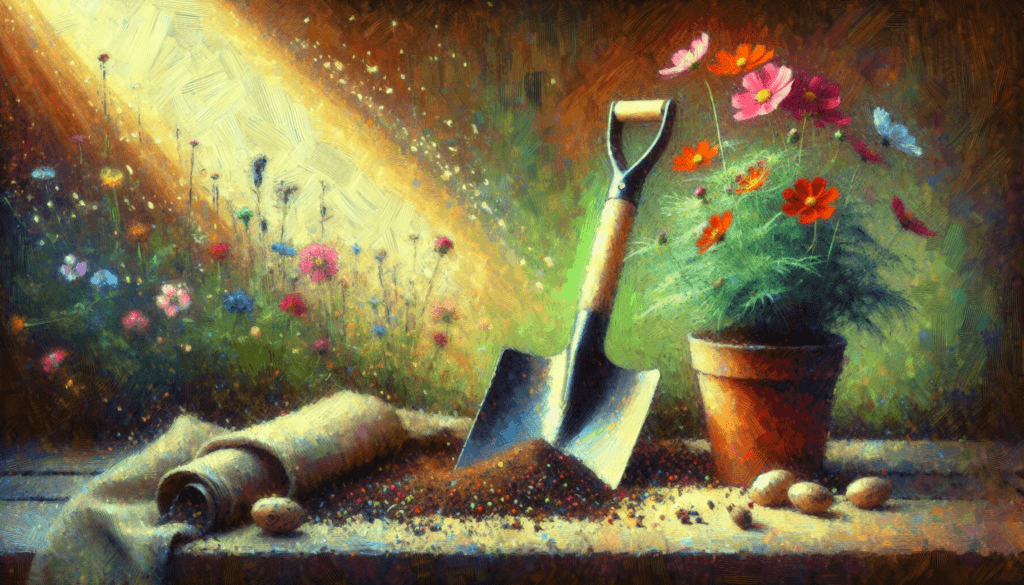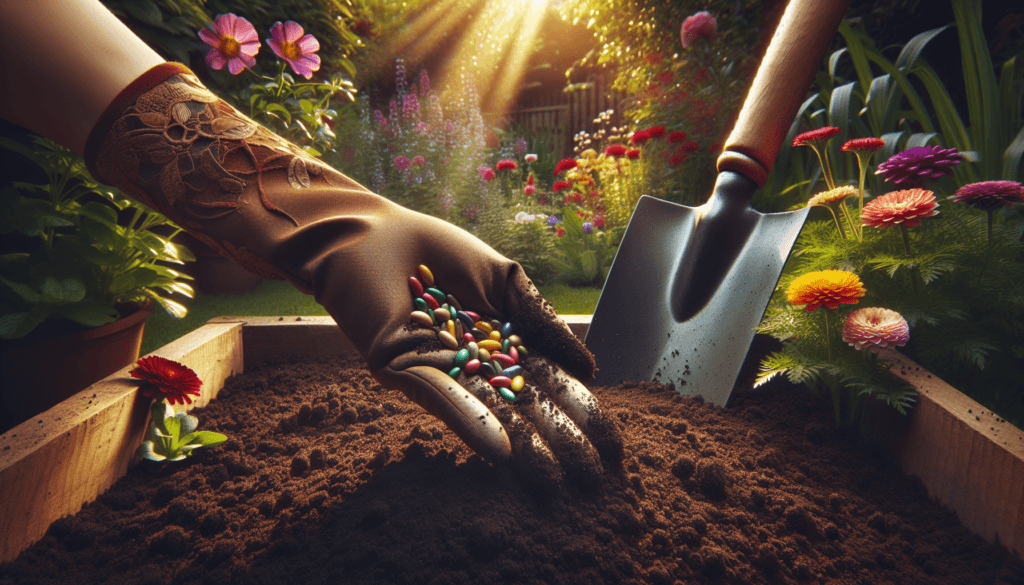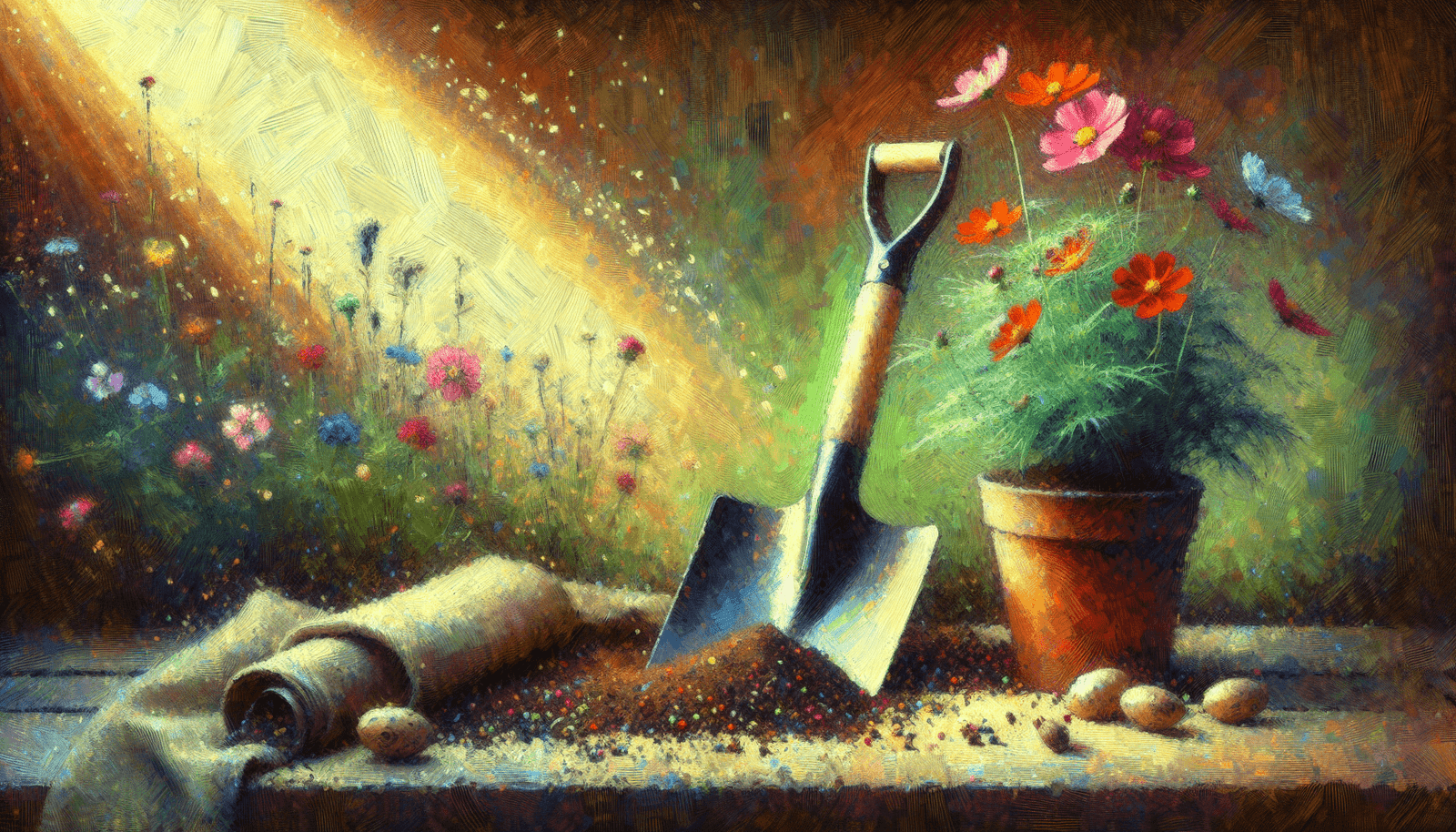Are you considering taking up gardening but not sure where to start? In this article, we will explore the basic requirements of gardening, giving you a brief overview of what you need to get started. From selecting the right tools and soil to understanding the importance of sunlight and water, this article will provide you with the essential knowledge to embark on your journey as a green thumb. So, let’s dig in and discover what gardening requires!

Planning and Preparation
Choosing a garden location
When it comes to choosing the perfect location for your garden, there are a few factors to consider. First and foremost, you’ll want to find an area that receives ample sunlight throughout the day, as most plants thrive in direct sunlight. Additionally, you’ll want to ensure that the location offers easy access to water sources for convenient watering. Lastly, consider the proximity to your home or outdoor living spaces so that you can easily enjoy and maintain your garden.
Determining garden size
Determining the size of your garden will depend on a few factors, such as the available space and the amount of time and effort you’re willing to invest in gardening. If you’re a beginner, it’s advisable to start with a smaller garden to manage the workload and gain experience. As you become more comfortable and confident, you can always expand your garden area.
Testing soil
Before starting your garden, it’s crucial to test the soil to understand its composition and nutrient levels. Soil testing kits are readily available and easy to use. By analyzing the pH level, you can determine whether the soil is acidic, neutral, or alkaline, as different plants thrive in different pH levels. Additionally, testing for nutrient deficiencies can help guide you in choosing suitable fertilizers and amendments.
Creating a garden layout
Creating a well-thought-out garden layout will not only enhance the aesthetic appeal but also promote efficient gardening practices. Begin by considering the different types of plants you want to include in your garden and their specific space requirements. Divide your garden into sections or beds, allowing for easy access and maintenance. You may want to incorporate pathways, borders, or raised beds for a visually pleasing layout. Planning the layout in advance will save you time and effort in the long run.
Plant Selection
Choosing suitable plants for the climate
The key to a successful garden lies in choosing plants that are well-suited to your specific climate. Take into account factors such as temperature, humidity, and rainfall patterns. Native plants and those adapted to your region are generally more resilient and require less maintenance. Research the USDA Plant Hardiness Zone for your area to identify the plants that are most likely to thrive in your specific climate.
Deciding between flowers, vegetables, or both
Before deciding on the types of plants to include in your garden, consider your personal preferences and goals. Are you looking to add vibrant colors and fragrant blooms to your outdoor space? If so, flowers may be the perfect choice for you. On the other hand, if you’re interested in growing your own fresh produce and enjoying the fruits of your labor, vegetables may be the way to go. You can also opt for a combination of flowers and vegetables for a diverse and visually appealing garden.
Considering plant care requirements
Different plants have different care requirements, including watering needs, sunlight requirements, and pruning schedules. As you select plants for your garden, be sure to consider the amount of time and effort you’re willing to invest in their care. Some plants may require frequent watering and constant monitoring, while others may be more low-maintenance. It’s essential to choose plants that align with your gardening goals and the time you can dedicate to their care.

Tools and Equipment
Essential gardening tools
To set yourself up for a successful gardening experience, there are a few essential tools that every gardener should have. These include a sturdy garden spade, a hand trowel, a rake, a hoe, and a pair of pruning shears. These basic tools will assist you in tasks such as digging, planting, raking, weeding, and pruning. Investing in high-quality tools will ensure their durability and make your gardening tasks much more manageable.
Optional gardening equipment
While the essential tools mentioned above are sufficient for most gardening needs, there are a few optional pieces of equipment that can make your gardening experience even more enjoyable and efficient. Some examples include a garden cart or wheelbarrow for transporting heavy materials, a garden hose with adjustable nozzles for convenient watering, and a kneeling pad or gardening stool for comfort during prolonged periods of work. Consider your specific gardening needs and preferences when deciding whether to invest in optional equipment.
Maintaining and storing tools
Once you have gathered your gardening tools and equipment, it’s essential to properly maintain them to ensure their longevity and effectiveness. Regularly clean your tools after use, removing any dirt or debris that may have accumulated. Keep blades sharp and lubricated for optimum performance. Additionally, proper storage is crucial to prevent damage or rust. Consider hanging your tools or storing them in a designated space, keeping them organized and easily accessible for future use.
Soil and Fertilizers
Understanding soil composition
Understanding the composition of your soil is vital for successful gardening. Soil is made up of various components, including sand, silt, clay, organic matter, and minerals. The ideal soil composition for most plants is a well-balanced combination of these components. By knowing the composition of your soil, you can make informed decisions about the necessary amendments and fertilizers to improve its fertility and structure.
Amending soil with organic matter
One of the most effective ways to improve soil quality is by adding organic matter. Organic matter, such as compost or well-rotted manure, enriches the soil by providing essential nutrients and improving its structure. It also enhances the soil’s ability to retain moisture and promotes beneficial microbial activity. Incorporating organic matter into your garden beds or mixing it with existing soil will create a fertile foundation for your plants to thrive.
Applying fertilizers effectively
Fertilizers provide additional nutrients that may be lacking in your soil, helping plants grow and flourish. When choosing fertilizers, consider the specific nutrient needs of your plants. Some common macronutrients found in fertilizers are nitrogen, phosphorus, and potassium, often represented by the NPK ratio on the packaging. Follow the recommended application rates and timing specified by the fertilizer manufacturer to avoid over-fertilization, which can harm plants and the environment.

Watering and Irrigation
Determining watering needs
Water is essential for plant growth and development, so it’s important to determine the watering needs of your garden. Factors such as plant type, soil type, weather conditions, and stage of plant growth all influence how much water your garden will require. Keep in mind that overwatering can be just as detrimental as underwatering, as it can lead to root rot and other issues. Aim for a balance by monitoring the soil moisture and adjusting your watering schedule accordingly.
Choosing watering methods
There are several methods for watering your garden, including hand watering, using sprinklers, or utilizing soaker hoses. Each method has its benefits and considerations. Hand watering allows for targeted watering and flexibility, while sprinklers cover larger areas but may waste water through evaporation. Soaker hoses deliver water directly to the plant roots, minimizing water loss. Consider the size and layout of your garden, as well as your available time and resources, when choosing the most suitable watering method for your needs.
Installing irrigation systems
For more extensive gardens or those with limited time for manual watering, installing an irrigation system can be a game-changer. Irrigation systems, such as drip irrigation or sprinkler systems, provide consistent and efficient watering to your garden. Drip irrigation delivers water directly to the plant roots, reducing evaporation and water waste. Sprinkler systems cover larger areas and can be automated for convenience. Consider consulting with a professional or doing thorough research to determine the best irrigation system for your garden.
Planting and Transplanting
Preparing seedlings for planting
If you’re starting your garden from seed, it’s crucial to properly prepare your seedlings for planting. Start by providing them with adequate light, warmth, and moisture to ensure healthy germination and growth. Educate yourself on the specific requirements of your chosen plants, such as the recommended germination temperature and lighting conditions. Transplant the seedlings into individual containers once they have developed enough true leaves, and gradually acclimate them to outdoor conditions before transplanting them into the garden.
Proper planting techniques
When it comes to planting, there are a few techniques to keep in mind to ensure the success of your plants. Begin by preparing the planting hole or bed, ensuring it is deep and wide enough to accommodate the plant’s roots. Gently loosen the roots before placing the plant in the hole, making sure it is at the same depth as it was in its original container. Backfill the hole with soil, gently firming it around the plant. Lastly, water thoroughly to settle the soil and promote root establishment.
Transplanting seedlings or established plants
Transplanting seedlings or established plants requires careful handling to minimize stress and ensure their successful adaptation to their new environment. Water the plant thoroughly before transplanting to maintain root moisture. Dig a hole wider and slightly deeper than the root ball of the plant. Gently remove the plant from its container, being careful not to damage the roots. Place the plant in the hole, backfill, and water well. Monitor the transplanted plant closely and provide any necessary support, such as staking, until it becomes established.

Weeding and Pest Control
Identifying and removing weeds
Weeds can quickly take over a garden and compete with your desired plants for resources. Regular weeding is essential to keep them in check. Identify common weeds in your area and learn their characteristics to easily spot and remove them. Pull weeds by grasping them at the base and gently pulling upward, making sure to remove the entire root system. Consider using mulch or landscape fabric to suppress weed growth and minimize the need for constant weeding.
Organic pest control methods
Dealing with pests is a common challenge in gardening, but there are effective ways to mitigate their impact while minimizing the use of harmful chemicals. Implementing organic pest control methods involves using natural enemies, such as beneficial insects and birds, to target and control pests. Additionally, practicing crop rotation, companion planting, and implementing physical barriers can help deter pests. Research natural pest control methods specific to the pests you’re facing to find the best solution for your garden.
Dealing with common garden pests
Common garden pests, such as aphids, snails, and slugs, can wreak havoc on your plants if left unchecked. It’s important to identify these pests and take appropriate measures to control their populations. Neem oil, insecticidal soaps, and homemade garlic or pepper sprays are effective organic options for pest control. Additionally, handpicking larger pests or using physical barriers, such as netting, can prevent pests from accessing your plants. Regular monitoring and early intervention are key to minimizing pest damage.
Pruning and Trimming
Understanding plant growth habits
Understanding the growth habits of your plants is crucial for proper pruning and trimming. Different plants have different growth patterns, including their tendency to produce new growth from buds or how they respond to pruning. Some plants benefit from regular pruning to encourage bushier growth, while others require minimal pruning to maintain their shape. Research the specific pruning needs of your plants to ensure you trim them at the appropriate time and in a way that promotes their health and vitality.
Proper pruning practices
Pruning is an essential gardening practice that involves selectively removing portions of a plant to enhance its structure, promote new growth, and maintain its health. Before pruning, ensure your tools are clean and sharp to make clean cuts. Identify any dead, diseased, or damaged branches and remove them first. Additionally, remove any crossing or rubbing branches to prevent damage and allow better airflow. Avoid over-pruning, as it can stress the plant and impair its ability to recover.
Trimming and shaping plants
In addition to basic pruning, trimming and shaping plants can add aesthetic appeal to your garden. Regularly trimming plants helps maintain their desired size and shape, preventing them from becoming overgrown or unruly. Use handheld pruners or shears to carefully remove excess growth, focusing on removing any straggly or leggy stems. Take your time and step back periodically to assess the plant’s overall shape and make adjustments as needed. Remember, shaping plants is an ongoing process that may require regular maintenance.

Mulching and Composting
Benefits of mulching
Mulching offers numerous benefits for your garden, making it well worth the effort. Mulch helps regulate soil temperature by insulating it during extreme weather conditions. It also conserves moisture by reducing evaporation and weed growth. Furthermore, mulch aids in preventing soil erosion and adds organic matter to the soil as it decomposes. Choose appropriate mulch materials, such as wood chips, straw, or compost, based on your specific plants’ needs and the desired aesthetics for your garden.
Choosing appropriate mulch materials
Selecting the right mulch materials for your garden is crucial for its effectiveness and appearance. Organic mulches, such as straw, wood chips, or shredded leaves, add nutrients to the soil as they break down. Inorganic mulches, such as gravel or landscape fabric, provide long-lasting weed control but do not contribute organic matter to the soil. Consider the specific needs of your plants, climate conditions, and the desired aesthetics when choosing the most appropriate mulch for your garden.
Composting kitchen and garden waste
Composting is a sustainable and eco-friendly way to dispose of kitchen and garden waste while creating nutrient-rich fertilizer for your plants. Set up a compost bin or pile in a designated area of your garden or choose a composting system that suits your available space. Compost a mixture of “green” materials, such as vegetable scraps and grass clippings, and “brown” materials, such as leaves and twigs. Regularly turn the compost to facilitate decomposition and speed up the process. Use the finished compost to enrich your soil and nourish your plants.
Gardening Tips and Tricks
Implementing companion planting
Companion planting is a technique that involves strategically planting different species of plants together to benefit one another. Some plants naturally repel pests or attract beneficial insects, while others improve soil health or provide shade. For example, planting marigolds alongside vegetables can deter pests, while growing beans next to corn allows the beans to climb the cornstalks. Implementing companion planting can maximize space and create a harmonious garden ecosystem.
Using natural remedies for plant health
Maintaining plant health is essential for a thriving garden, and natural remedies can effectively address common issues. For example, a mixture of water and mild soap can control aphids, while a solution of baking soda and water can combat fungal diseases. Neem oil and diatomaceous earth are natural options for pest control. Research different natural remedies for specific plant problems to find the most suitable solution. Additionally, promoting overall plant health through proper care and maintenance minimizes the need for interventions.
Protecting plants from extreme weather
Extreme weather conditions, such as heatwaves, frost, or strong winds, can pose challenges to your garden. Protecting your plants during such conditions is crucial for their survival. Utilize shade cloths or row covers to shield plants from scorching sun, protect tender plants with frost blankets during cold snaps, and provide windbreaks to minimize wind damage. Observing weather patterns and taking proactive measures to protect your garden can make a significant difference in the health and resilience of your plants.
In conclusion, gardening requires careful planning and preparation to create a thriving and beautiful outdoor space. From choosing the right garden location and determining the garden size to testing the soil and creating a garden layout, each step contributes to the success of your gardening endeavor. The selection of suitable plants for your climate, deciding between flowers or vegetables (or both), and considering plant care requirements are essential aspects of plant selection. Equipping yourself with essential gardening tools, considering optional equipment, and maintaining and storing tools properly will make your gardening tasks more manageable. Understanding soil composition, amending soil with organic matter, and applying fertilizers effectively are key elements for nurturing healthy plants. Determining watering needs, choosing suitable watering methods, and installing irrigation systems will ensure your plants receive adequate hydration. Proper planting techniques, preparing seedlings for planting, and transplanting seedlings or established plants are crucial steps in the growth process. Weeding and pest control, along with pruning and trimming, are necessary maintenance practices to ensure a thriving garden. Mulching and composting not only benefit your plants but also promote sustainability in your gardening efforts. Implementing gardening tips and tricks, such as companion planting, using natural remedies, and protecting plants from extreme weather, will enhance your garden’s overall health and success. With a friendly tone and comprehensive information, this article provides valuable guidance for anyone interested in the rewarding and enjoyable hobby of gardening.


